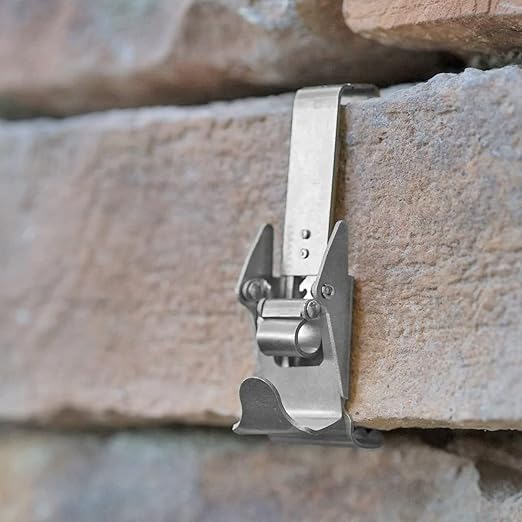Your beautiful brick exterior is more than just a pretty face; it’s a significant investment that deserves proper care. Over time, dirt, grime, mildew, and even moss can accumulate, dulling its appearance and potentially causing damage. While pressure washing can be effective, it can also be harsh, potentially damaging the mortar between bricks. That’s where the right cleaning brush comes in. Choosing the right brush can make all the difference in restoring your brickwork to its former glory, without the risks associated with more powerful cleaning methods. This guide will explore the best brushes for cleaning outdoor brick surfaces, helping you select the perfect tool for the job.
Why Choose a Brush Over Pressure Washing?

Pressure washers are undeniably powerful, but their intensity can be detrimental to brick surfaces. The high-pressure stream can dislodge mortar, erode the brick’s surface, and even damage the underlying structure. A well-chosen brush, on the other hand, offers a gentler approach. It allows you to meticulously clean individual bricks and crevices, removing dirt and debris without the aggressive force that could harm your property. This gentler approach is particularly important for older brickwork, which is more susceptible to damage.
Types of Brushes for Brick Cleaning
Several brush types are ideal for tackling brick cleaning, each with its own strengths and weaknesses:
1. Stiff-Bristled Brushes: The Workhorses

Stiff-bristled brushes are your go-to for tough jobs. Look for brushes with natural bristles (like boar bristle) or synthetic bristles made from durable materials like nylon. Natural bristles are generally softer and more flexible, making them suitable for less heavily soiled surfaces. Synthetic bristles are more resistant to wear and tear and can better handle stubborn stains. The handle length is crucial here; longer handles allow you to reach higher areas without needing a ladder, improving safety and efficiency.
2. Soft-Bristled Brushes: Gentle Cleaning
For delicate brickwork or when dealing with light grime, a soft-bristled brush is the gentler option. These brushes are less likely to scratch or damage the brick’s surface. They are particularly useful for regular cleaning or for maintaining already clean brickwork. Pay attention to the density of the bristles; a denser brush will be more effective at removing dirt.
3. Push Brushes: Efficiency on Large Surfaces
Cleaning large brick surfaces can be time-consuming. Push brushes, similar to those used for cleaning floors, can significantly speed up the process. These brushes are often wider, allowing you to cover a larger area with each stroke. However, ensure the bristles are appropriate for brick; overly soft bristles won’t be effective, while overly stiff ones could be abrasive.
4. Detail Brushes: For Precise Cleaning
No matter how carefully you clean, some areas will require more attention. Detail brushes, often with smaller heads and stiffer bristles, are perfect for cleaning grout lines, intricate carvings, or hard-to-reach corners. These brushes allow you to target specific problem areas without affecting the rest of the surface.
Choosing the Right Bristle Material

The bristle material significantly impacts cleaning effectiveness and surface safety. Here’s a breakdown:
- Natural Bristles (Boar Bristle): Softer, more absorbent, and generally gentler on the brick. However, they can wear down faster than synthetic bristles.
- Synthetic Bristles (Nylon): More durable, resistant to wear and chemicals, and often more effective at removing stubborn grime. They can be stiffer, so choose carefully based on your brick’s condition.
Cleaning Solutions: Beyond the Brush
While the brush is the key tool, the right cleaning solution is crucial for effective cleaning. Avoid harsh chemicals that could damage the brick. A mixture of mild detergent and water is often sufficient for regular cleaning. For mildew or stubborn stains, consider using a specialized brick cleaner, always testing it on an inconspicuous area first. Rinse thoroughly with clean water after cleaning.
Maintaining Your Brushes
Proper brush maintenance extends their lifespan and keeps them effective. After each cleaning, rinse the brush thoroughly to remove dirt and debris. Allow it to air dry completely before storing it in a dry place to prevent mildew and maintain bristle integrity. Regularly inspect the bristles for wear and tear and replace the brush if necessary.
Conclusion: A Clean Brick Exterior, Effortlessly

Cleaning your outdoor brick surfaces doesn’t have to be a daunting task. By understanding the various types of brushes available and choosing the right one for your needs, you can easily restore the beauty of your brickwork. Remember to consider the bristle material, handle length, and cleaning solution for optimal results. With the right tools and techniques, you can enjoy a sparkling clean brick exterior for years to come. So grab your brush, get cleaning, and admire the transformation!